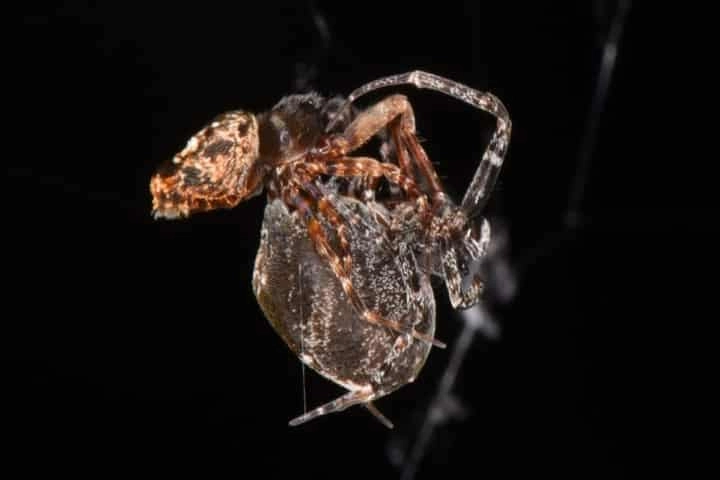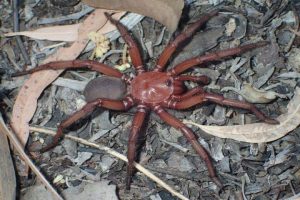The mating of orb-weaving spiders comes to an end with a spectacular act on the part of the males as they fling themselves away from the females at such an amazing speed that a human eye can’t see it!
Contrary to what may be perceived as an act to impress females, it is actually a desperate move to save oneself from being eaten up by them following the end of the sexual encounter says a report livescience.com.
A new study on this stated that what makes this jump truly incredible is that it uses a method that hasn’t been seen among the spiders earlier. It involves the use of a joint in the front legs that stores kinetic energy which when released allows them to leap dozens of centimetres that too in a split second.
That is not all, as before mating, the males also fasten themselves to the web of the females with a safety line made of silk allowing them to climb back to mate again once they have escaped the jaws of death! The scientists feel that this catapulting post-sex method evolved as means of survival for the male many of whom mate with the same female five times.
Also read: Scientists solve the mystery of how spider gangs plan attacks
Orb-weaving spiders or Philoponella prominens are small creatures with the males measuring just 0.1 inches while the females being twice their size and they live in colonies which may have more than 200 spiders as residents, all living in the large network of webs.
This behaviour on the part of the male spiders came to the notice of the scientists in 2019 in Wuhan, China. According to the study’s lead author, Shichang Zhang, the males catapulting off the females was so fast “that common cameras could not record the details”. Zhang, who is an Associate Professor at Wuhan’s Hubei University's School of Live Sciences told Live Science that noticing this action is what made researchers take a closer look at what was going on.
It was not easy to take a closer look as the spiders were small and their mating got over really fast – the duration from copulation to catapult was merely 30 seconds! Thus, the authors of this study grappled with the high-speed camera to focus on filming the mating act of the spiders and the males jumping across.
Airing his views about it, Zhang said: "That's the most difficult part in this research.”
The researchers gathered 600 of these spiders and did 155 successful mating trials. Even though clicking them was difficult, images were captured with a camera shooting 1,500 frames per second and later a software was used to quantify the energy and speed of the male spiders' catapulting escapes.
Once the first mating was over, 97 per cent of the males escaped and those who didn’t “were captured, killed and consumed by the females”, as per the authors. The 30 males which were not allowed to escape with their catapulting mechanism disrupted were also killed.
Sexual cannibalism is what brought about the evolution of this escape mechanism. The spiders flung themselves at a great speed – 2.9 feet per second. As per Zhang that is equal to an adult human being leaping and landing one second later at a distance of 1,740 feet.
Remarking about this mechanism, the researchers said: "We hypothesized that the mechanism of the catapulting is that the legs are folded against the female, and then when released the hydraulic pressure causes the legs to rapidly expand.”
This type of action is found in other creatures like mantis shrimp and trap-jaw ant’s mandibles except there is a difference. Explaining that Zhang said: "But they use the fast actions to either capture prey or escape predators.” The spiders are the only known creatures using this method to guard against cannibalism during mating.
Details of the study appeared in the journal Current Biology this month.




















